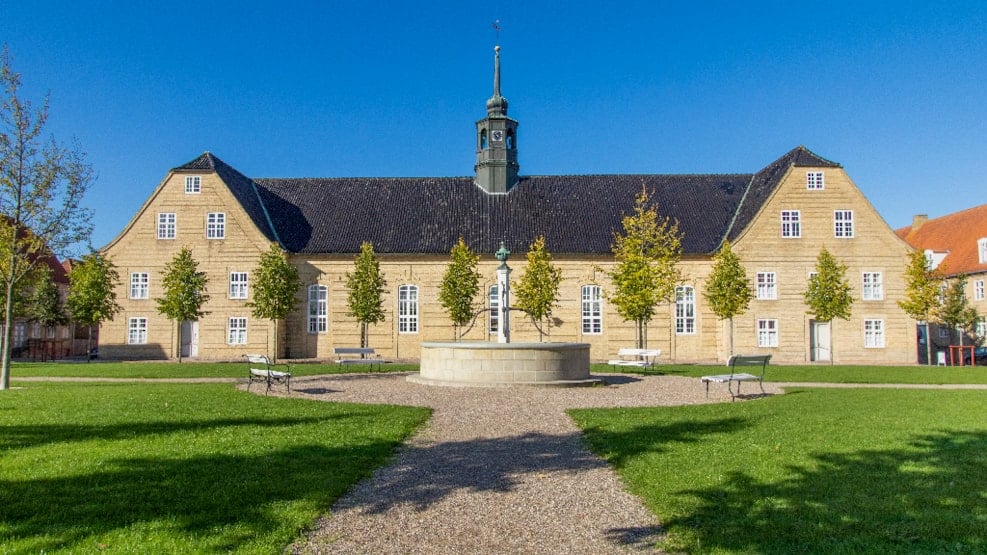
Can Faith Create World Heritage?
In 1768, Christian 7. embarked on a grand tour of Europe. Along the way, the king and his entourage visited the Moravian settlement of Zeist in the Netherlands.
In 1771, the Moravian Church was invited to settle in Southern Jutland.
The purpose was an early form of regional development. The enterprising Moravian Church aimed to promote craftsmanship, trade, and industry in the region. In 1773, the construction of the town began on a bare field. The congregation quickly demonstrated why they had a reputation for diligence, order, and virtue. Within 10 years, they had raised the town’s central buildings, and by 1800, the entire town was completed.
The Moravian Church had a dream. They wanted to create an ideal town—a town that would promote the social order they desired. This dream has been pursued worldwide, where the Moravian Church has established 30 towns based on these ideals, such as Herrnhut in Germany and Bethlehem in the USA. However, the best-preserved town can be found in Christiansfeld. The church is located in the center, and the town’s two main streets run parallel, framing the Church Square. Symmetry and consistency characterize the town. Centrally located are the buildings for the choirs in which the congregation was organized based on gender, family status, and age. Unmarried brothers lived in one common choir house, and unmarried sisters in another. Only after a couple married could they move out of the choir houses into their own home.
In many ways, the religious community was ahead of its time. They believed more in education than in harsh discipline for children’s development. They arranged housing and work communities for the single, widowed, and unmarried. They prioritized the community over the individual, creating a society based on welfare, learning, and equality—a kind of welfare society, just a couple of hundred years before the term was coined.
While Danes lived in half-timbered houses with rammed earth floors, the Moravian Church built houses with solid foundations and fully brick walls—durable houses that still stand today.
The Moravian Church's influence in the country would likely have been greater if it weren’t for the war in 1864. With the loss of Schleswig, Christiansfeld ended up on the German side of the border and entered a phase of stagnation.
The Moravian Church still exists. The congregation has 400 members in Denmark, of which 150 live in Christiansfeld.
Step into the Sister House and see the exhibitions of Museum Kolding. See how a choir house is arranged. Imagine the sisters working in the individual rooms. Go on a guided tour and hear the whole story of how a faithful community created a town with a plan so remarkable that it was included on UNESCO’s World Heritage List.